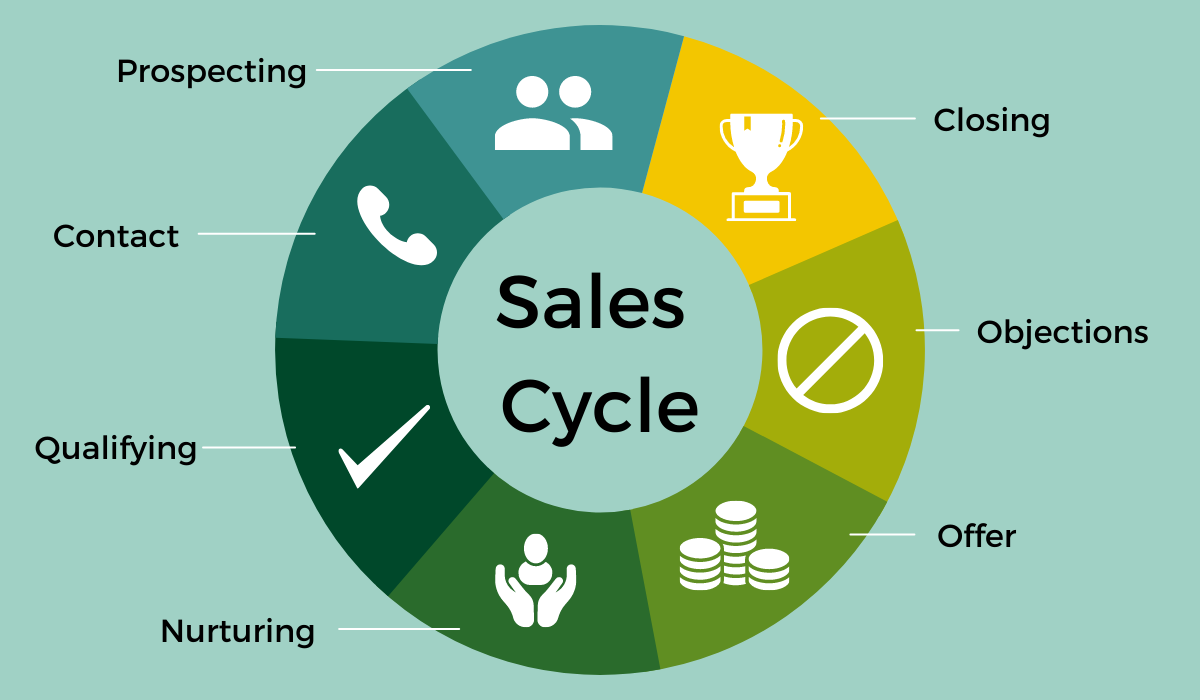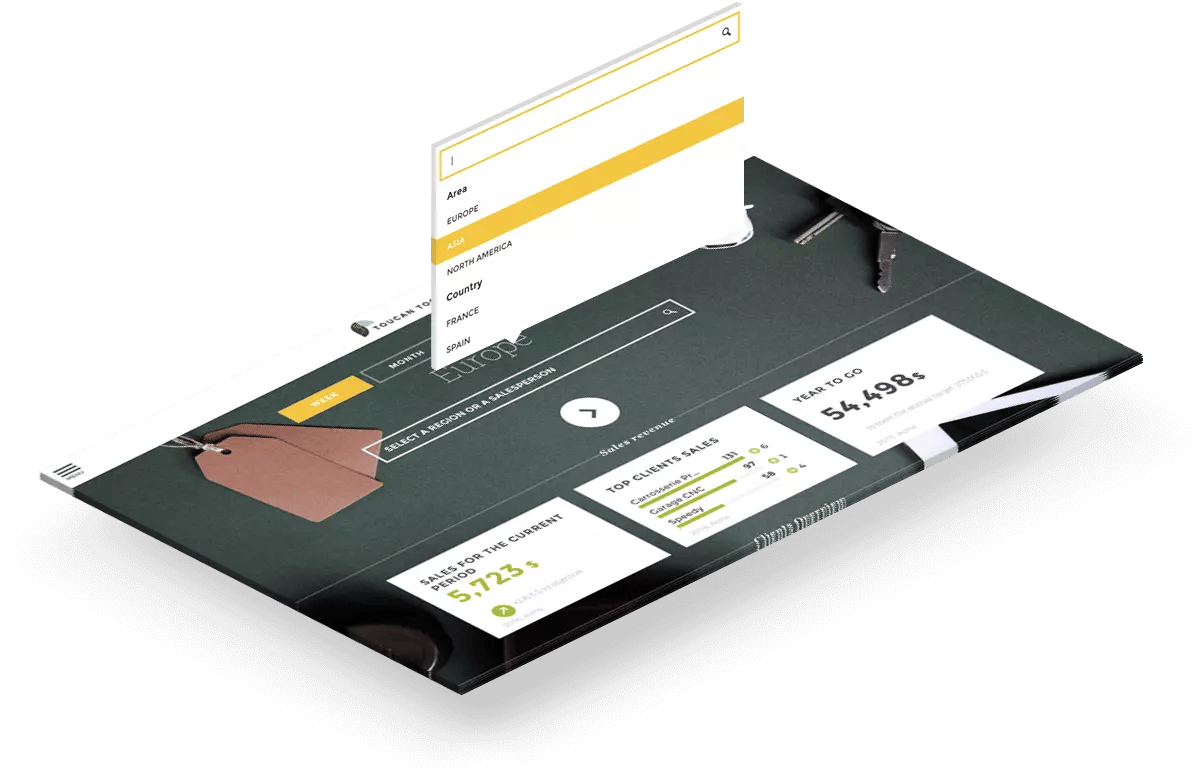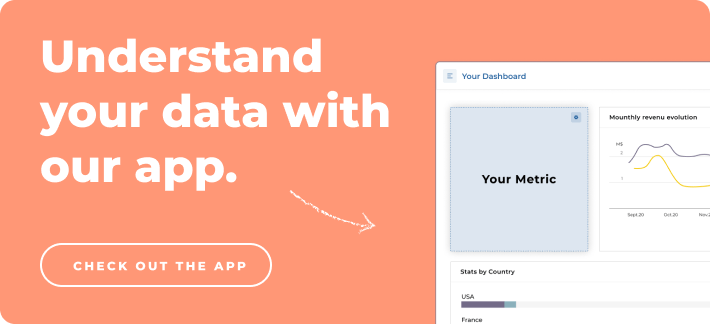Many factors determine what a company's sales cycle is, such as its industry, target market, and customer type. Because of this, the steps leading upto close my differ between companies.
The purpose of this guide is to walk you through the different steps of a sales cycle and help to improve your sales process. Check out what an optimal sales cycle looks like.
What is a sales cycle and why is it important ?
A sales cycle is a process your company undertakes when selling a product or service to a customer. Think of it as a series of steps that lead you up to a sale.
Sales cycle is important for the following reasons
- You will be able to train new sales reps using a well-defined sales cycle. You will be able to provide them with a structured roadmap, making it easier for them to get used to your sales process.
- You'll also be able to organize your team more effectively once you understand your sales cycle. Imagine you analyzed your sales cycle and realized there was a bottleneck in the demo process. Your team will need to be re-assigned roles so that enough is being done at this point.
- You can also better evaluate the performance of your team by keeping track of the sales cycle. A decreasing sales cycle indicates that you are successfully closing your leads in a shorter amount of time, which is great news. Benchmarking your sales cycle against that of your competitors can help you know where you stand.
Sales cycle stages
Sales cycles are unique to every company. However, the majority of them adhere to a few steps. Your marketing automation tool generates leads that are transferred to your sales team, which starts the sales cycle. Some companies combine inbound and outbound sales strategies, including cold calling and emailing, door-to-door visits, etc.

It is important to identify the stages of your sales cycle and the key metrics you should use to measure your team’s performance.
The sales cycle stages can differ depending on:
- The industry you’re in
- Your company’s market share
- The type of product or service you are offering
But for the most part, these 7 steps are almost always present in every B2B sales cycle.
1. Prospecting
Your salespeople begin the sales cycle when they start prospecting. Leads can come in through various channels and must be treated with a different importance level accordingly. The channels could be:
- Prospects who come in via advertisements
- Demo requests or signup forms
- Discovery calls
- Outbound prospecting (emails and phone calls)
- Lead lists, and more
It is important to build an ideal customer profile (ICP) and stick to it. In your ICP, you should include information about the potential clients you want to approach. Identify their pain points and personal background. This will help you look for attributes beyond just demographics, interests, or associations.
This stage might seem similar to lead generation. In reality, it’s much more than just that. With lead generation, you merely collect the contact information of your leads, whereas, with sales prospecting, you’re actually reaching out to these leads and establishing whether they’re interested in your company or not.
2. Contact
Once you start having a steady inflow of leads, you have to start contacting them. Although, before you decide how you want to make contact, you’ll have to assess them and determine which stage of the buyer’s journey they’re in.
It is imperative that you call your leads promptly. The stats show that vendors who contact prospects first are likely to generate 30-50% of the sales. Try to take that in. Getting back to your prospects in 24 hours simply won't cut it. If you want the best chance of converting the lead into a paying customer, call them back as soon as possible.
You don't need to worry if your leads don't answer your calls. On average, it takes 8 to 12 attempts to reach a lead over the phone - so keep trying. It's best to reach out on Wednesdays and Thursdays between 4 and 6 pm, but try to switch up your timing to see what works best for your industry.
3. Qualifying
You must qualify your leads after you've contacted them. Will they be a good fit for your business? Are you able to meet their needs as well? The previous step of the sales cycle should have already included some pre-qualification.
Once you're sure your lead fits your ICP and is capable of purchasing, schedule a discovery call with them to better understand their needs and pain points.
Otherwise, you should ask them some questions that can help you assess how well they fit into your typical buyer profile. BANT (budget, authority, need, and time) is commonly used in many companies.
- What is their budget?
- What is their job title? This is to determine if they have the authority to make a purchase.
- What are their pain points and needs? See if you sn address it
- What is the timeline of purchase?
It is especially important for companies whose products or services are priced at a premium to understand the lead's budget. The last thing you'd want is to spend three months nurturing a lead, only to learn that they don't have the budget to purchase from you.
4. Nurturing
If your lead is not ready to buy immediately, start nurturing them to slowly move them down your sales funnel.
Companies often make the mistake of attempting to "force" a sale. Your prospects don't want to finish the consideration phase with a sales pitch, since almost anyone can sell. You need to treat your prospects with dignity and respect and not just treat them like another number among a sea.
Ultimately, they make the decisions. Instead of pushing, send them valuable resources such as eBooks, articles, or case studies so they can make an informed decision. Using email campaigns, you can be sure these resources reach their inboxes in a timely fashion.
5. Offer
At this point, your prospect would have visited your pricing page, or if you're lucky, would have signed up for a free trial of your product. This indicates their interest in buying your product.
Consider the following:
- If they request a demo, explain to them what your product is and how it will solve their problems
- With a trial, you would know how they are using your product. Make a specific and relevant offer after you have presented your product to them.
6. Objections
Having made your offer, your lead now has the ball in their court. You may encounter pushback from them, and they might raise one or more objections, including:
- “It’s not our priority right now”
- “We’re evaluating your competitor as well, and might go with them”
- “Your product is complicated”
- “I’ve not heard positive things about your company”
- “Your product is lacking in some features”
- “I’ll get back to you in some time”
- “I don’t want to commit to a contract at the moment”
If they object, you must convince them that choosing your company is the right decision.
7. Closing
After you've resolved the objections of your lead, it's time to close the sale. Once you've completed all the forms and paperwork, go ahead and ask your lead one final question. What is the right time for implementation? This is known as a direct approach.
Alternatively, if they are not responsive because of last-minute changes to their plans or other circumstances, try a softer approach. Explain how your product helps them address their pain points, and include the case study again so that they can see how your product helps them grow.
You need to adapt your approach based on your lead's temperament. This allows you to predict whether a direct or a soft approach will be more successful with this person.
What happens after you’ve successfully closed the sale? Walk them through the next steps and let them ask any follow-up questions.
Sales process KPIs

You should monitor a few key performance indicators (KPIs) to further optimize your sales process. Understanding your sales cycle's effectiveness will help you improve it.
Here are three key KPIs you need to track for optimal sales cycle performance:
Number of monthly sales
Understanding how many new customers you were able to acquire can be determined by the number of sales you make monthly. By comparing this to last month's numbers, you will know how you are doing. If the numbers are lower this month, you’ll have to optimize your sales process.
Analyze why this may be happening and ask yourself the following:
- Inefficient sales reps?
- Not the right season for sales?
- Is the marketing team letting you down?
Number of new leads per month
Depending on the type of business, this metric varies. A new lead can be generated by people signing up for your free trial or by people visiting your website for a while.
- Compare new leads this month with the previous month to understand if your efforts are justified
- Calculate the average lead-to-sale conversion rate (number of leads/number of sales)
The length of your sales cycle
It is better to have a shorter sales cycle. Your sales process can be greatly boosted if you track and optimize this KPI.
Boost your conversion rate by assigning sales reps to follow up with cold deals. You can share content with them, offer discounts, or extend their trial instead of forcing them into an immediate sale.
You should also examine the sales cycle length of each sales rep on your team separately. Those who have a lower sales cycle than their company are doing well. If not, try to improve their performance.
If you are unsure about how to measure these KPIs or want to dive deeper into your sales management data, check out the Toucan sales management dashboard.



